The AMD A8-3850 Review: Llano on the Desktop
by Anand Lal Shimpi on June 30, 2011 3:11 AM ESTEver since the arrival of Conroe back in 2006, we've only really recommended AMD for its (sometimes incredible) value. Recommending AMD for those looking for absolute performance pretty much ended when the Pentium 4 retired.
AMD is looking to change that with the arrival of its first Fusion APUs. These APUs marry one or more AMD x86 cores with dozens if not hundreds of Radeon "cores" on a single die. While today the APU is little more than a cohabitation of these two computing architectures, the end goal is something far more integrated:

Llano is AMD's second Fusion APU, the first being Zacate which we met earlier this year. Llano shouldn't be all that unfamiliar to you either, the notebook version of the APU launched just two weeks ago. Our conclusions were as you'd expect: sub-par x86 performance but competitive battery life and great gaming performance for a value notebook. If gaming is going to be the most intensive thing you do on your notebook, you may find yourself wanting one based on a Llano APU.
Now it's time to look at Llano on the desktop. We previewed the desktop Llano alongside the mobile version but today we're back with much more detail. This article will focus on the basics: CPU performance, GPU performance and the associated details. Ian has a final review of one of the first desktop Llano motherboards - the ASRock A75 Extreme6 as well as a look at overclocking the new desktop APU. Finally Ganesh's article takes an in-depth look at how Llano works as an HTPC platform.
The APU
Although mobile Llano has to worry about fitting into thin and light notebooks, the desktop version has a lot more breathing room and as a result it comes to us in a pretty traditional package. Motherboard backwards compatibility is thrown out the window as you need pins to get video output from the APU to an on-board VGA/DVI/HDMI header and as a result we have a new platform: Socket-FM1.
Socket-FM1 is a 905-pin ordeal that looks reminiscent of the original Clawhammer CPU:
Despite the socket change, heatsink specifications haven't changed. All existing Socket-AM2/AM2+/AM3/AM3+ heatsinks should work just fine as long as they can handle the rated TDP of the chip you're cooling.
The desktop Llano launch starts small. AMD is only introducing four parts today, two of which will be available later:
| AMD Llano Desktop Lineup | |||||||||
| GPU | Total TDP (GPU + CPU) | CPU Cores | CPU Clock (Base/Turbo) | GPU Cores | GPU Clock | Price | |||
| AMD A8-3850 | Radeon HD 6550D | 100W | 4 | 2.9GHz | 400 | 600MHz | $135 | ||
| AMD A8-3800 | Radeon HD 6550D | 65W | 4 | 2.4/2.7GHz | 400 | 600MHz | $?? | ||
| AMD A6-3650 | Radeon HD 6530D | 100W | 4 | 2.6GHz | 320 | 443MHz | $115 | ||
| AMD A6-3600 | Radeon HD 6530D | 65W | 4 | 2.1/2.4GHz | 320 | 443MHz | $?? | ||
The A8-3850 and A6-3650 are going to be the first Llano APUs available, both carry a 100W TDP rating. While this may seem high, do remember that 100W is for the CPU and GPU combined.
Although Llano does support AMD's new Turbo Core technology, neither of the parts launching today have it enabled. The A8-3850 and A6-3650 run at 2.9GHz and 2.6GHz, respectively. The 3800 and 3600 will drop base clock speeds to hit a lower TDP but allow you to turbo up depending on workload. For an explanation of how Turbo Core works, flip back to our mobile Llano article.
Pricing is pretty reasonable. For $98 you can buy an Athlon II X4 640 running at 3.0GHz. For $37 more AMD will sell you an A8-3850 APU, effectively determining the price of the integrated GPU. AMD expects to see desktops built around the A6 to sell for $500 - $600, and A8 based systems to go for between $600 and $700
| CPU Specification Comparison | ||||||||
| CPU | Manufacturing Process | Cores | Transistor Count | Die Size | ||||
| AMD Llano 4C | 32nm | 4 | 1.45B | 228mm2 | ||||
| AMD Thuban 6C | 45nm | 6 | 904M | 346mm2 | ||||
| AMD Deneb 4C | 45nm | 4 | 758M | 258mm2 | ||||
| Intel Gulftown 6C | 32nm | 6 | 1.17B | 240mm2 | ||||
| Intel Nehalem/Bloomfield 4C | 45nm | 4 | 731M | 263mm2 | ||||
| Intel Sandy Bridge 4C | 32nm | 4 | 995M | 216mm2 | ||||
| Intel Lynnfield 4C | 45nm | 4 | 774M | 296mm2 | ||||
| Intel Clarkdale 2C | 32nm | 2 | 384M | 81mm2 | ||||
| Intel Sandy Bridge 2C (GT1) | 32nm | 2 | 504M | 131mm2 | ||||
| Intel Sandy Bridge 2C (GT2) | 32nm | 2 | 624M | 149mm2 | ||||
Architecturally desktop Llano is no different than its mobile counterpart. These are all quad-core parts with updated 32nm cores, boasting a ~6% increase in IPC over their 45nm Athlon II predecessors. Each core has a private 1MB L2 cache for a total of 4MB per quad-core APU.
The GPU side isn't different architecturally either, you're still looking at a Sumo core derived from AMD's Radeon HD 5570. Desktop Llano is available with either 400 GPU cores or 320 cores (you can get the mobile part with only 240 cores enabled as well). While the mobile parts top out at 444MHz, the extra TDP available in a desktop chassis allows AMD to ratchet up the GPU clock to 600MHz for the A8-3850.
AMD calls the two GPU configurations the Radeon HD 6550D and 6530D. Just like you can with mobile Llano, you can also pair a desktop Llano APU with a discrete GPU to have them both run in an asymmetrical CrossFire mode (with limitations of course):
| AMD Radeon Dual Graphics Branding | ||||
| Discrete GPU | 6550D | 6530D | ||
| HD 6670 | HD 6690D2 | HD 6690D2 | ||
| HD 6570 | HD 6630D2 | HD 6610D2 | ||
| HD 6450 | HD 6550D2 | HD 6550D2 | ||
The Chipset
I hate to keep drawing comparisons between desktop and mobile Llano APUs but we also have two chipsets on the desktop side: A75 and A55. The A75 chipset is the high end option with 6 x 6Gbps SATA ports and 4 x USB 3.0 ports:
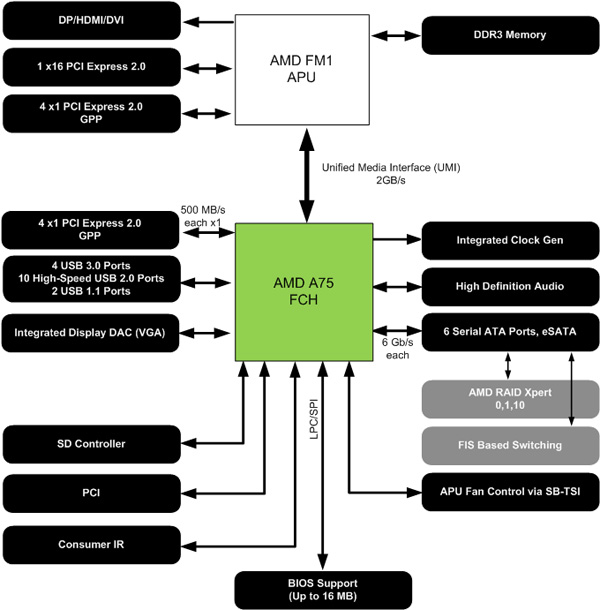
The A55 is the lower power, cost effective option that gets rid of all USB 3.0 support and backs down to 3Gbps SATA:
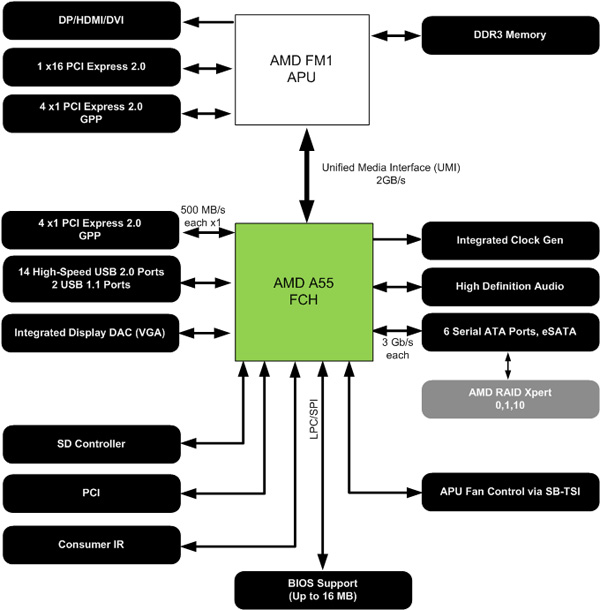


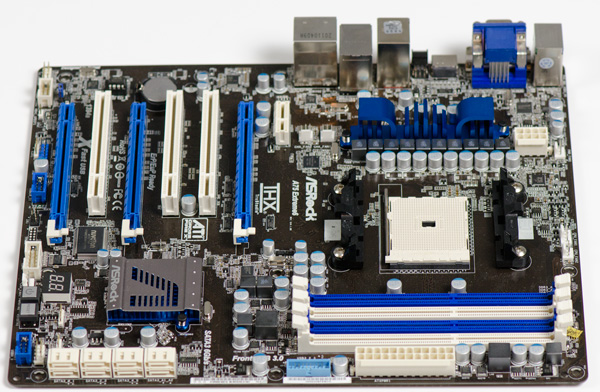
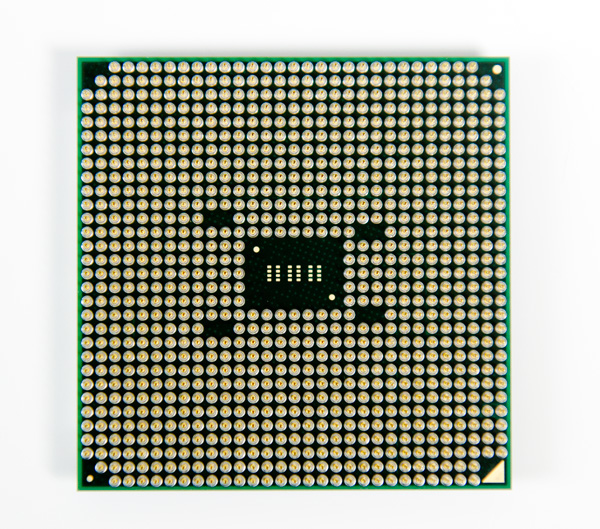
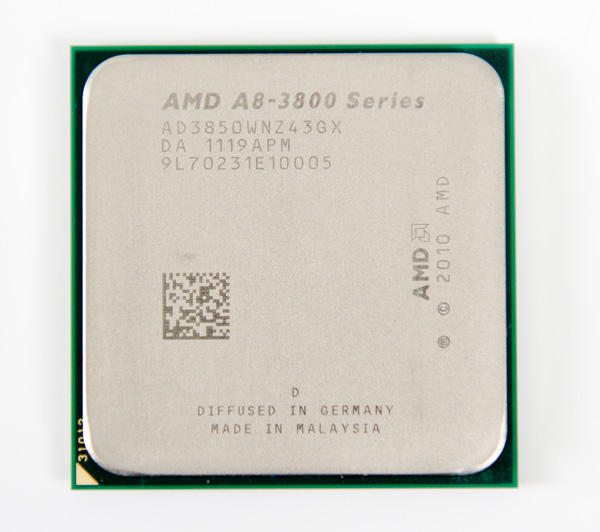
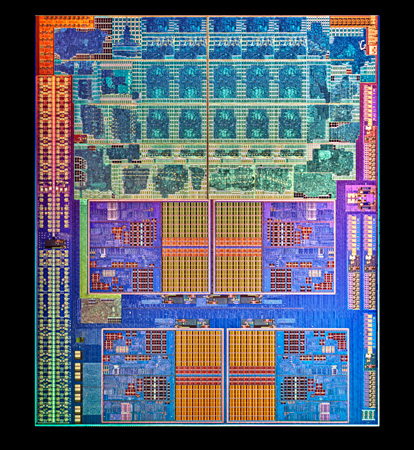








99 Comments
View All Comments
HW_mee - Thursday, June 30, 2011 - link
Thank you.The single core parts are only in the older laptops, the Athlon's and ULV's are dual core, but immensely slow compared to a i3-2100.
I believe that any post Pentium 4 processor, either Intel dual core or Athlon X2, should be enough for a casual user, yet people here give me the impression that i3-2100 or athlon X4 is a bare minimum in any computer :-/ I just had to respond to that.
seapeople - Saturday, July 2, 2011 - link
Come on, this is getting silly. You may be right on your points about the "average user", but what's also true about the "average user" is they probably set their 1440x900 20" LCD monitor to 1024x768 because "it all looks bigger". Does that mean we should all team up and head out to different websites reviewing new monitors saying "The 1080p resolution is USELESS nowadays! Most people don't even use it! Ever since they came out with 720p, resolution doesn't even matter on a monitor anymore,"Just because people happily tolerate crappy old processors doesn't mean they wouldn't notice and be happier with the speed of an i3.
HW_mee - Tuesday, July 5, 2011 - link
Unfortunately some users do set their LCD monitor to lower than native resolution because they want things to be bigger, I do not see this with Windows 7, but a lot of older people did it in XP to get bigger icons and text.I am not saying that the average user idiotic mindset should be the point of a test, I am saying that the discussion on Intel iX-XXXX vs some AMD X4 for an average user is overkill. Give the average user a cheap Athlon X2, an E-350 or a low end Core 2 and use the money saved on an SSD or proper GPU and the end user will be way happier than with an expensive processor.
It is funny, people replying to my post really seem to hate reading about someone recommending a slow processor.
Seikent - Thursday, June 30, 2011 - link
+1It's a bit obvious that Llano is not for the people reading this review, but I see a lot of average users that at most have a dual core pc (celeron, pentium 4, athlon x2, etc) that don't want to update their computers because they don't use them very much and they are good enough to browse and write stuff. For them, Llano is a suitable upgrade.
Remember that there are a lot of countries where the salaries are way lower than USAs and electronic stuff is more expensive, so it isn't cheap to buy a $400 USD PC.
HW_mee - Tuesday, July 5, 2011 - link
Thank you. It is nice to see someone who comments on the market I find Llano is intended for, instead of thinking I am a troll claiming somebody may not care that their 5 year processor is slow compared to what they can get now.BTW. I am from a country where the average income is higher than in most of the world and the equivalent of 400$ barely buys you a computer, that was the launch value of the Wii when it launched here :-)
For that money you can get an Atom or Sempron based computer :-( not exactly a fast computer by any accounts. The AMD A8 processors will probably end up in OEM system costing the equivalent of 1000$ once they get here.
BigDDesign - Friday, July 1, 2011 - link
If you can move a mouse fast, than a faster processor works. PEROID. Use a mouse to it's ability, and there is room for even faster CPU's. Enough said.tech6 - Thursday, June 30, 2011 - link
While it may make a good entry level gaming system, I would also say that it is a solid business PC platform, providing enough GPU and CPU performance, decent power usage at a competitive price. The weakness of the Sandybridge desktop is the single core graphics which is underwhelming on larger (and increasingly common) monitors and this is where AMD has a sizable advantage.BSMonitor - Thursday, June 30, 2011 - link
Nope. Why on earth would a company switch from Intel to AMD machines because the AMD APU delivers better integrated gaming performance???Not a one.
Llano is a tiny niche product. A total yawn.
L. - Thursday, June 30, 2011 - link
Look at a few trends, like desktop virtualization, thin clients, all that.. and you'll see how smaller-scale APU's are quite the business flavor of the moment.This goes just the same for brazos ..
Llano is way too powerful for anything businessy so let's not bring it into the discussion.
BSMonitor - Thursday, June 30, 2011 - link
And what benefit does a Llano CPU with 4 cores and decent gaming performance do for the desktop virtualization picture??The Core i3's wipe the floor with them in terms of power usage and single threaded applications.
So what benefit is Llano in this case? What good would 2 extra cores and better FPS do with the real work applications on the server?
Intel has already been producing these chips since January. It's now July.